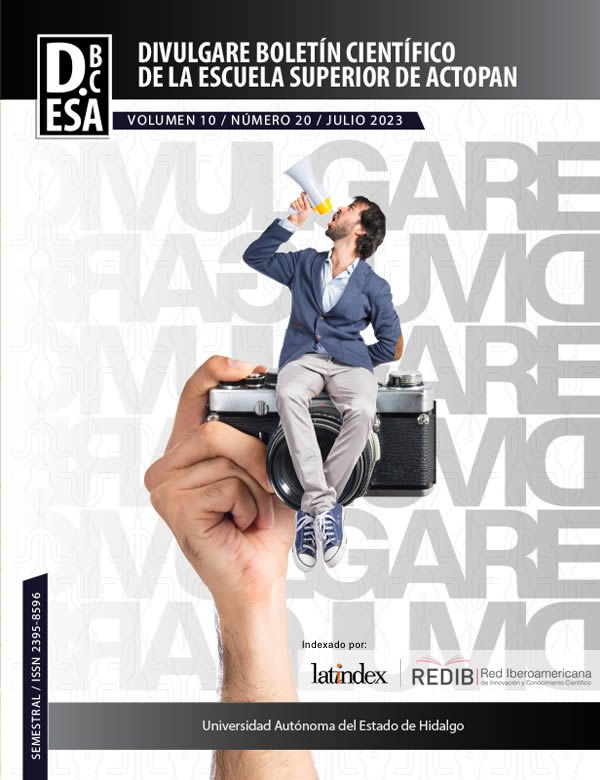Efecto del estrés psicológico en la sincronización cardiaca interpersonal.
Resumen
La interacción interpersonal se presenta cuando distintas personas interactúan, tal interacción puede ser directa o indirecta. Durante este tipo de interacción se puede presentar sincronización fisiológica. Además, al observar o interactuar con alguien que experimenta estrés se pueden generar cambios fisiológicos en el observador. El objetivo de este estudio fue evaluar el efecto del estrés psicológico en la sincronización cardiaca interpersonal cuando las personas no interactúan directamente. Participaron 76 personas sanas con promedio de edad de 18.6 años. Se evaluó la actividad cardiaca en una condición de línea base y otra de evocación de estrés. Se analizó la sincronización de los intervalos entre latidos cardiacos por diadas, se usaron los análisis de correlaciones cruzadas y de información mutua (IM). La comparación entre las dos condiciones de evaluación se realizó mediante una prueba T. Se formaron un total de 2850 diadas, solo en la IM se encontraron diferencias significativas con una reducción del IM en la condición de estrés. El estrés psicológico redujo la sincronización fisiológica, aunque esta reducción solo se presentó al considerar análisis no lineales
Descargas
Citas
Allen, J. J.B., Chambers, A. S., & Towers, D. N. (2007). The many metrics of cardiac chronotropy: A pragmatic primer and a brief comparison of metrics. Biological Psychology, 74(2), 243-62.
Benardi NF, Codrons E, di Leo R, Vandoni M, Cavallaro F, Vita G, Benardi L. (2017). Increase synchronization of autonomic rhythms between individuals when listening to music. Frontiers in Physiology, 8, 785.
Buchanan, T. W., Bagley, S. L., Stansfield, R. B., & Preston, S. D. (2012). The empathic, physiological resonance of stress. Social Neuroscience, 7(2), 191–201.
Butler E. A. (2011). Temporal interpersonal emotion systems. Personality and Social Psychology Review, 15(4), 367–393.
Dimitroff, S. J., Karda, O., Necka, E., Decety, J., Berman, M. G., & Norman, J. G. (2017). Physiological dynamics of stress contagion. Scientific Reports, 7, 6168.
Decety, J. & Meyer, M. (2008). From emotion resonance to empathic understanding: a social developmental neuroscience account. Development and Psychopathology, 20(4), 1053–1080.
Flores-Duarte, I. M., Pliego-Carrillo, A. C., Ledesma-Ramírez, C. I., Echeverría-Arjonilla, J. C., Peña-Castillo, M. A., Pacheco-López, G., & Reyes-Lagos, J. J. (2019). Comparación de algoritmos lineales y no lineales para la detección del desacoplamiento cardiorrespiratorio en ratas endotoxémicas. Revista Mexicana de Ingeniería Biomédica, 40, 1-11
Gallese, V. (2001). The 'shared manifold' hypothesis: From mirror neurons to empathy. Journal of Consciousness Studies, 8, 33-50.
Hatfield, E., Cacioppo, J. T., & Rapson, R. L. (1993). Emotional contagion. Current Directions in Psychological Science, 2(3), 96–100.
Haas, A. & Langer, E. (2014). Mindful attraction and synchronization: mindfulness and regulation of interpersonal synchronicity. NeuroQuantology, 12(1), 21-34.
Haken H, Kelso JS, Bunz H. (1985). A theoretical model of phase transitions in human hand movements. Biological Cybernetics, 51(5), 347-356.
Herrando, C. & Constantinides, E. (2021). Emotional contagion: a brief overview and future directions. Frontiers in Psychology, 12, 712606.
Hoehl, S., Fairhurst, M., & Schirmer, A. (2021). Interactional synchrony: signals, mechanisms and benefits. Social Cognitive and Affective Neuroscience, 16(1-2), 5-18.
Keysers, C., Kaas, J. H., & Gazzola, V. (2010). Somatosensation in social perception. Nature Reviews Neuroscience, 11(6), 417–428.
Kleinbub J R (2017) State of the art of interpersonal physiology in psychotherapy: a systematic review. Frontiers in Psychology, 8, 2053.
Leman, M., Moelants, D., Varewyck, M., Styns, F., van Noorden, L., Martens, J.-P. (2013). Activating and relaxing music entrains the speed of beat synchronized walking. PLoS One, 8(7), e67932.
Palumbo, R.V., Marraccini, M.E., Weyandt, L.L., Wilder-Smith, O., McGee, H.A., Liu, S. and Goodwin, M.S. (2017). Interpersonal autonomic physiology: a systematic review of the literature. Personality and Social Psychology Review. 21(2): 99-141.
Repp, B.H., Su, Y.-H. (2013). Sensorimotor synchronization: a review of recent research (2006–2012). Psychonomic Bulletin & Review, 20(3), 403-452.
Semin, G. R. (2007). Grounding communication: Synchrony. En Kruglanski, A. & Higgins E. T. (Eds.), Social Psychology: Handbook of Basic Principles. EUA: Guilford Publications.
Semin, G. & Cacioppo, J. T. (2008). Grounding social cognition: Synchronization, coordination, and co-regulation. En Semin G and Smith ER (Eds.), Embodied grounding: Social, cognitive, affective, and neuroscientific approaches. New York: Cambridge University Press.
Trost, W., Frühholz, S., Schön, D., Labbé, C., Pichon, S., Grandjean, D., & Vuilleumier, P. (2014). Getting the beat: entrainment of brain activity by musical rhythm and pleasantness. NeuroImage, 103, 55–64.
Waters, S. F., West, T. V., & Mendes, W. B. (2014). Stress contagion: physiological covariation between mothers and infants. Psychological Science, 25(4), 934–942.
Derechos de autor 2023 Erik Leonardo Mateos Salgado, Carlos Alberto Gutierréz Chávez, José Esael Pineda Sánchez

Esta obra está bajo licencia internacional Creative Commons Reconocimiento-NoComercial-SinObrasDerivadas 4.0.











